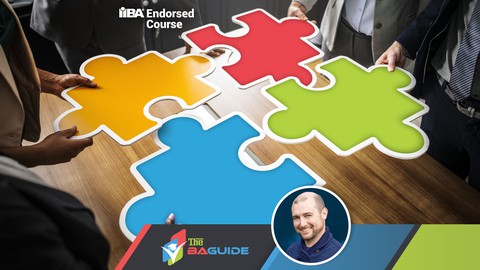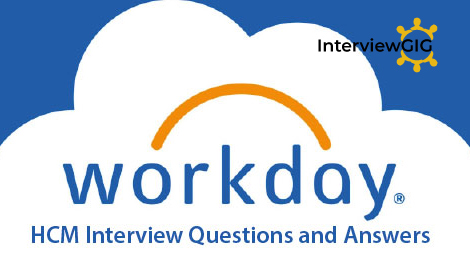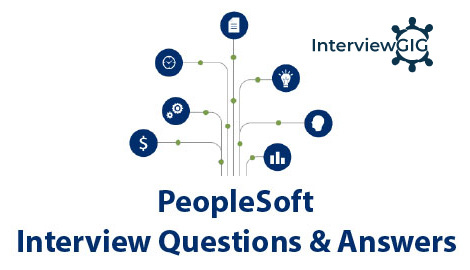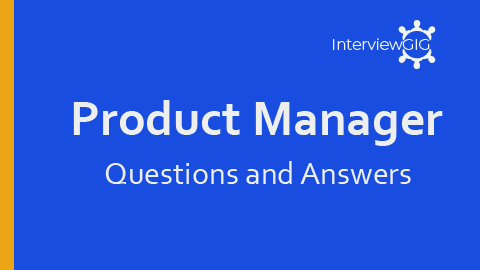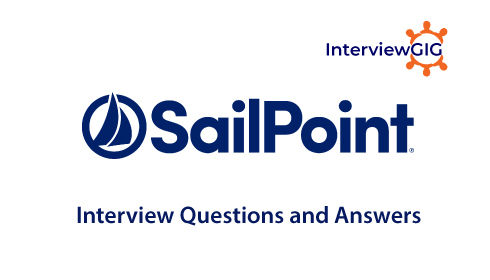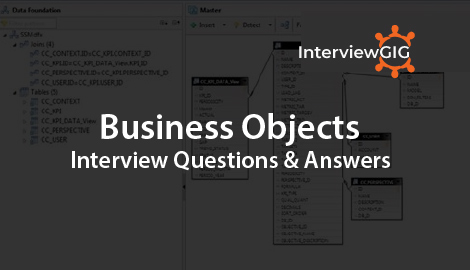What is business Analyst?
A Business Analyst is the one who analyzes the business of an organization. The core duty of a Business Analyst is requirements management.
(Or)
Business Analysis is the task of understanding business change needs, assessing the business impact of those changes, capturing, analysing and documenting requirements and supporting the communication and delivery of requirements with relevant stakeholders.
What do you see as the key skills of a business analyst?
There are several skills required to be a successful BA. They are not just limited to your work. These skills even include your personal qualities and approach towards your clients. Some of the key skills expected from any Business Analyst are:
- Good communication skills
- Leadership skills
- Analytical skills
- Customer Service skills
- Strategic thinking approach
- Collaborating with other employees and colleagues
- Customer oriented
- Ability to drive and adapt to the changes.
What Does Business Analytics Mean?
BA is a catch-all expression for approaches and technologies you can use to access and explore your company’s data, with a view to drawing out new, useful insights to improve business planning and boost future performance.
Typically, this involves using statistical analysis and predictive modeling to establish trends, figuring out why things are happening, and making an educated guess about how things will pan out in the future.
What about Business Intelligence?
BI is also about accessing and exploring your organization’s data. And, again, the ultimate goals are to better understand how the business is doing, make better-informed decisions that improve performance, and create new strategic opportunities for growth. But on the whole, BI is more concerned with what’s and the how’s than the whys.
BI lets you apply chosen metrics to potentially huge, unstructured datasets, and covers querying, data mining, online analytical processing (OLAP), and reporting as well as business performance monitoring, predictive and prescriptive analytics.
What is the definition of BCG matrix?
BCG matrix is a framework created by Boston Consulting Group to evaluate the strategic position of the business brand portfolio and it’s potential. It classifies business portfolio into four categories based on industry attractiveness (growth rate of that industry) and competitive position (relative market share).
What is the difference between business intelligence and business analytics?
While superficially similar, the difference between business intelligence vs business analytics is clear: BI uses past and current data to optimize the present for current success. BA uses the past and analyzes the present to prepare companies for the future.
Can you name the tools that are helpful for business analyst?
Documentation: MS Word. Knowing how to use Word is not an end in itself but a means to various ends; what really matters is to put Word to effective use for the unique, specific purposes of your project.
Presentation: MS PowerPoint. Similar rules as above.
Data Analysis: MS Excel, SQL querying.
Modeling and Flowcharts: MS Visio, eDraw.
Wire framing, Mockups: Pencil, Balsamiq, MS Visio.
Communication, Collaboration: A good understanding of how to “effectively” use email, chat, phone, audio and video conferencing, web meeting, shared network/cloud storage systems, SVN.
What is Benchmarking?
Benchmarking is comparing one’s business processes and performance metrics to industry bests and best practices from other companies. In project management benchmarking can also support the selection, planning and delivery of projects. Dimensions typically measured are quality, time and cost.
In the process of best practice benchmarking, management identifies the best firms in their industry, or in another industry where similar processes exist, and compares the results and processes of those studied (the “targets”) to one’s own results and processes. In this way, they learn how well the targets perform and, more importantly, the business processes that explain why these firms are successful.
According to National Council on Measurement in Education, benchmark assessments [2] are short assessments used by teachers at various times throughout the school year to monitor student progress in some area of the school curriculum. These also are known as interim assessments.
What are the tasks that are not part of a BA’s job?
A Business Analyst is not intended to organize the project team meetings.
A Business Analyst should not bother regarding the risks and issues tracker of a project.
A Business Analyst should not perform activities like testing (executing the TC’s), coding or programming.
What Is the Difference Between an Issue and a Risk?
First of all, let’s look at the high-level difference between “Issues” & Risks”:
“Issues”
- Present focused
- Always negative
- Documented in “Issue register”
- Response will be “Issue work- around”
“Risks”
- Future focused
- Can be positive (or) negative
- Documented in “Risk register”
- Response will be done based on “risk response planning”
In short, the main difference between an issue and a risk is the time and the level of impact on the project: Issues are current events that have little effect on the project and solving them is usually easy, risks are future events that may have severe effects on the project and solving them requires ingenuity.
What is a misuse case?
Misuse cases were described for the first time in 2001 by Guttorm Sindre and Andreas Opdahl, two Norwegian professors in the area of information system development, for requirements in the area of system security. They explained the known requirements process with use cases and use cases diagrams.
A misuse case can be imagined as an inside-out use case – so, a feature that should not be implementable in a system. It offers another viewpoint of the system to manage security requirements. Above all, these requirements are very meaningful according to the Kano model of stakeholder satisfaction.
An activity performed by a user which in turn causes system failure. It may be a malicious activity. As it is misguiding the system function flow, it is termed as misuse case.
What are Advantages of misuse cases?
- Quality is increased because non-functional requirements are noticed
- Developers and customers can better understand the system
- Model is easy to understand and use
- Measures are immediately visible because risks and counter-measures are visualized
- Risk analysis is possible early on
- Risks can be recognized customer-specifically
- Traceability is ensured because features to increase security have to be revised.
What is a flowchart and why it is important?
Flowchart shows complete flow of system through symbols and diagrams. It is important, because it makes the system easy to understand for developers and all concerned people.
What is use case?
A use case is a methodology used in system analysis to identify, clarify, and organize system requirements. The use case is made up of a set of possible sequences of interactions between systems and users in a particular environment and related to a particular goal. It consists of a group of elements (for example, classes and interfaces) that can be used together in a way that will have an effect larger than the sum of the separate elements combined.
The use case should contain all system activities that have significance to the users. A use case can be thought of as a collection of possible scenarios related to a particular goal, indeed, the use case and goal are sometimes considered to be synonymous.
Name the two documents related to a use case?
The two documents are FRD (Functional Requirement Document) and SDD (System Design Document).
What is the difference between high-level and low-level use case?
High-level Use Case Diagram gives you snap shot for your system and contains many process within it.
Low-level Use Case Diagram will describe one process in details with alternative flow, exception and include/exclude descriptions
What is difference between Fish Model and V Model?
Fish model is comparatively very costly and time consuming, while, V model requires less time and cost. Moreover, Fish model is used when there were no ambiguities in the customers’ requirements. Otherwise, another model is preferred.
Explain equivalence class?
Equivalence class a mathematical concept is a subset of given set induced by an equivalence relation on that given set. (If the given set is empty then the equivalence relation is empty and there are no equivalence classes; otherwise the equivalence relation and its concomitant equivalence classes are all non-empty.) Elements of an equivalence class are said to be equivalent under the equivalence relation to all the other elements of the same equivalence class.
For each equivalence relation there is a collection of equivalence classes. Any two different equivalence classes are disjoint and the union over all of the equivalence classes is the given set. Equivalence classes and their corresponding equivalence relation are defined in set theory a vital foundation for mathematics and those fields that use mathematics. More details can be found in a study of equivalence relation.
What is UML?
UML (Unified Modeling Language) is a modeling standard in the field of object-oriented software systems. It has been standardized by OMG (Object Management Group) after being developed by Rational Corp (Booch Group). UML is a modeling language which puts together several diagrammatic views which can be used for any stage of the software development life cycle.
UML was designed basically to provide a common platform for all the stakeholders in a project starting from the end users, analysts, designer, and developers etc who are vital to the success of the project. So, in a way it cut down the miscommunication of the requirements and the display of the design in one common language which is understandable by everyone concerned.
Mention the components of UML?
UML uses many concepts from many sources.
For Structure: Actor, Attribute, Class, Component, Interface, Object and Package.
For Behavior: Activity, Event, Message, Method, Operation, State, use case.
For Relationships: Aggregation, Association, Composition, Depends, Generalization (or Inheritance).
Other Concepts: Stereotype. It qualifies the symbol it is attached to.
What is a Communication Diagram?
A UML 2.0 Communication Diagram models the objects or parts of a system, the interactions (or messages) between them, and the sequence in which these interactions occur. There are a lot of similarities between communication diagrams and sequence diagrams in terms of the information they show, but because of how each diagram presents the information, one diagram may be better at conveying or emphasizing specific information over the other.
What is a Sequence Diagram?
Sequence diagrams are part of UML (Unified Modeling Language) diagrams and come under the interaction view as they depict the interactions between the entities and the transactions that are taking place with the trigger point and the end point clearly distinguished. The diagram shows the different processes as vertical columns or lines and the messages or interactions between them is represented by arrows with the arrowhead pointing towards the receiver away from the sender.
What is Class Diagram?
Class diagram is an important one to know if you are a business analyst. Like use case diagrams, these class diagrams also explain the application in a pictorial representation, but in more technical way where a common user cannot understand by looking at these. A class diagram represents the relation between each class of the entire application. In one way it is a static representation of a structure of an application. It clearly tells the different classes and its attributes and relation between each class.
Normally for each member there will be few notations to tell more about the class member. These notations are placed before class. They are PUBLIC, PROTECTED, PRIVATE & PACKAGE.
In a nut shell, class diagrams can be defined as object-oriented analysis and design documents. These class diagrams explain the relation between each class in a system and they properties, attributes, etc.
What is Scrum Method?
Scrum is one of several light-weight agile methods that use an iterative and incremental approach for the development of information systems. The Scrum method brings a small team together to work on a specified set of features over a period of 30-days (called a sprint).
Both the term Scrum and sprint are borrowed from the sport Rugby. A scrum is where the two teams are engaged in a huddled to begin play following a period where play has been stopped. The fast-moving period of play from the point of the scrum until play ends again is called a sprint.
What is meant by Agile?
Agile is a general term and conceptual framework used to describe a number of “light-weight” methodologies, such as Extreme Programming (XP), SCRUM, and Rapid Application Development (RAD), which exhibit a series of common characteristics. Some of these characteristics include:
- Iterative analysis and development
- Time-boxed iterations of a predefined length
- Delivery of the most critical features and functions first
- Delivery of a complete build with an initial set of limited features within a few months (often 1-2 months)
- Small cross-functional teams usually of 6-9 team members.
- Daily team communication meetings
- Reduced levels of documentation
- Rational Unified Process (RUP)
What is RUP?
Rational Unified Process (RUP) is an object-oriented and Web-enabled program development methodology. According to Rational (developers of Rational Rose and the Unified Modeling Language), RUP is like an online mentor that provides guidelines, templates, and examples for all aspects and stages of program development.
RUP and similar products — such as Object-Oriented Software Process (OOSP), and the OPEN Process are comprehensive software engineering tools that combine the procedural aspects of development (such as defined stages, techniques, and practices) with other components of development (such as documents, models, manuals, code, and so on) within a unifying framework.
Is RUP and Agile process?
Scrum and RUP are specific software development methods that can enable agile software development. These methods (and others, such as XP) are not mutually exclusive, and can be combined in many ways to tailor an agile process suitable for a particular project.
What is ETL?
Extraction Transformation and loading. Used mainly in data warehousing. ETL.ETL is an important part of today’s business intelligence (bi). It is the IT process from which data from disparate sources can be put in one place to programmatically analyze and discover business insights.
What are different software methodologies?
SDLC, RUP, SEI-CMM, Six sigma, SWOT, Cost benefit analysis, Risk analysis
What are different Types of testing?
Unit testing : by developer
Black box testing : Functional and module level.
Ad hoc testing : Random testing. No particular process.
White box testing : Very detailed. Into the code.
Exploratory : ad hoc testing with some purpose/ goal.
Front end : for web based applications.
Back end : database level
Regression : Testing again and again the same application.
UAT : User acceptance testing
Integration : testing the interaction of 2 or more than 2 modules at a time.
System testing : Testing all the modules together.
What do you know about SDD?
It is also called system design document. My role as a BA is just a mediator or a middle layer between business users and developers and we make developers to understand the business requirements.
Describe the meaning of the term data mapping.
Data mapping is the process by which a system developer creates data element mappings that relates two models of data (databases) in order to assist in data integration. This usually assists in the following manner:
- Data mediation or transformation between the source and the destination of data
- Assisting in data lineage analysis by identifying the data relationships
- Assists in data masking by discovering sensitive data
- Assists in data de-identification process
- Assists in consolidating multiple databases into one thus identification of redundant columns and advising the developers for consideration or even elimination.
How is business plan evaluated?
A business plan is evaluated by checking the contents of the plan such as if the plan have based on the resource planning and envisioning phase of the project.
How is requirement analysis done by business analyst?
Requirement session is usually done through JAD session. Business Folks and Major sponsors are always there along with some technical folks. Business analyst then goes through each requirement and asks for the feedback. If Business Sponsors and Technical Folks think that all the requirements are according to the business and won’t be a barrier to existing system. They get the official signoff on Business Requirement document. IT manager and Business manager both do the sign off on that business requirement document.
What are the industry and professional standards followed by business analyst?
Industry standards that have been set for the BAs to follow are OOAD principles and Unified Modeling Language (UML). This is a common language used by business analysts all around the world to draft the functional requirements.
What is SDLC?
The SDLC is Software Development Life Cycle, meaning the total development life cycle of a system. It describes the step by step processes that take places in the development of system. A Business Analyst is closely involved with the Software Development Life Cycle (SDLC).
The SDLC involves in the following steps:
Feasibility Study: A feasibility study is done prior starting of the project to sure that the system is feasible.
Project Planning: The project is planned with time-lines, resources and expected output of the process.
Requirement Analysis: The system requirement is analyzed and documented on this stage.
User Interface Design: The graphic designing of the system is built as per the requirements.
Project Development: The project coding is done by the software programmers who are working on the project.
Integration and Testing: The developed software is integrated and tested by the quality analysts.
Acceptance and Installation: Here, the developed software is checked if it will be work in live conditions.
System Maintenance: The software developed is maintained after installing to the live.
What is project management? Can you explain?
Project management is the process of planning, organizing, motivating and controlling resources, procedures and protocols to achieve a specific goal. It is used to organize scientific and daily problems. The main challenge to project management is achieve all the project goals. These are time, quality, scope, budget etc.
What is BPMN stands for?
It is Business Process Model and Notation. It is a graphical representation of business processes.
Define BPMN Gateway?
BPMN Gateway is a processing modeling component that is used to control flow of interaction, sequence of processes.
What INVEST stands for?
INVEST means Independent, Negotiable, Valuable, Estimable, Sized Appropriately, Testable. It can assist project managers and technical team to deliver quality products/services
What is the difference between Business Analyst and Business Analysis?
Business Analysis is the process performed by the Business Analyst.
Define Pareto Analysis?
Pareto Analysis is a proper technique used in decision-making for quality control activities and also used in tracing out the resolutions for defects. Basically, it is categorized as a decision-making technique based on its statistics that, with a limited number of selected inputs we can have a great impact on the outcome.
It is also termed as 80/20 rule because as per this analysis 80% of the benefits of a project are achieved from 20% of the work.
How can you handle and manage the difficult stakeholders?
Dealing with difficult stakeholders is a major task for a BA. There are many ways to handle such situations, few important points to be noted among them are listed below.
Identify that difficult stakeholder among the group of stakeholders, listen and concentrate on their point of view with patience. Be polite to them and do not close off the conversation immediately with such people.
Generally, a stakeholder will be difficult because they are not comfortable with few things in the project. So, listen to them and answer such difficult stakeholders in a diplomatic way.
Find out a way to meet them personally and have a one on one discussion. By this, you can show your commitment towards them.
What is PEST analysis and what is its importance?
PEST basically stands for Political, Economic, Social and Technological. PEST analysis is used to assess the above four external factors in relation to your business situation. It is beneficial for your business as them help in understanding how these 4 factors will affect your business in the long term.
How do you follow business rules in a project while working on a project?
Business rules are the key in defining any business process. Example credit card company wants to prepare the process and the key business rule is – check applicant’s credit score and income. The process will need to include these two sub-process to complete the main process and without with it will through an exception. You can use the use case diagram or process diagram to include this information in your Use case document or Functional Requirement Document.
What is GAP analysis?
Gap Analysis:
- The process of determining, documenting, and approving the variance between business requirements and system capabilities.
- The process of determining and evaluating the variance or distance between two items’ properties being compared.
- The study of the differences between two different systems or applications, often for the purpose of determining how to get from one state to a new state.
- A gap is sometimes spoken of as “the space between where we are and where we want to be.” Gap analysis is undertaken as a means of bridging that space.
